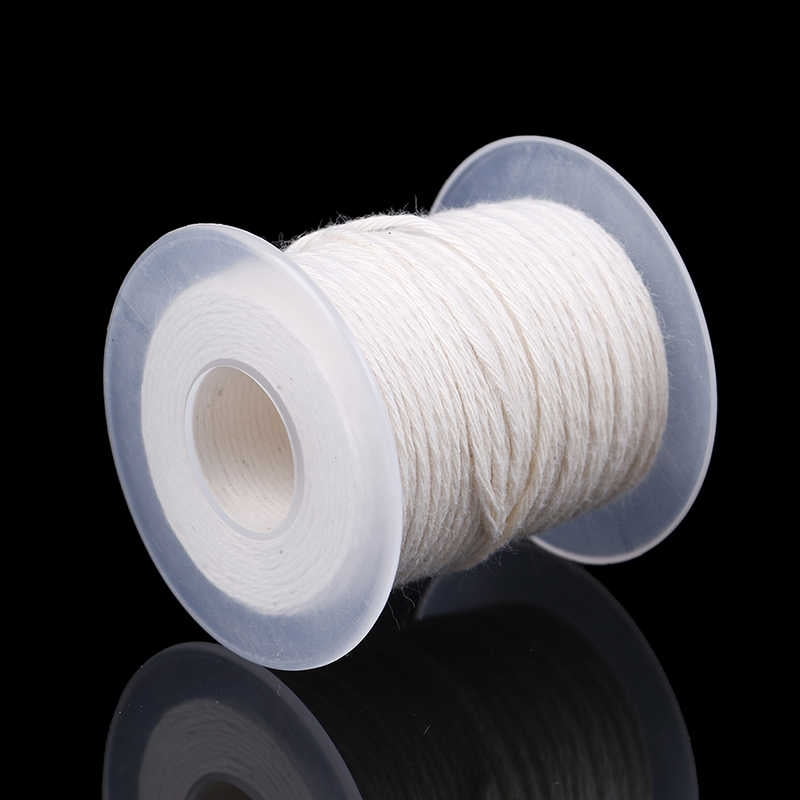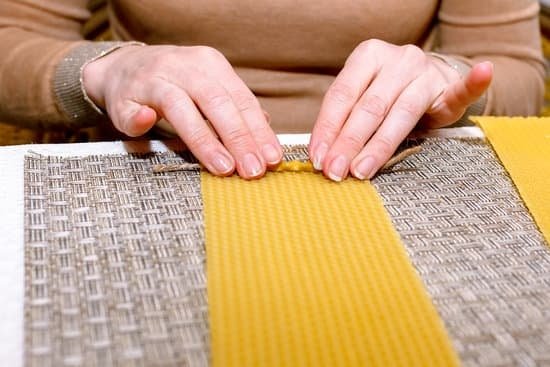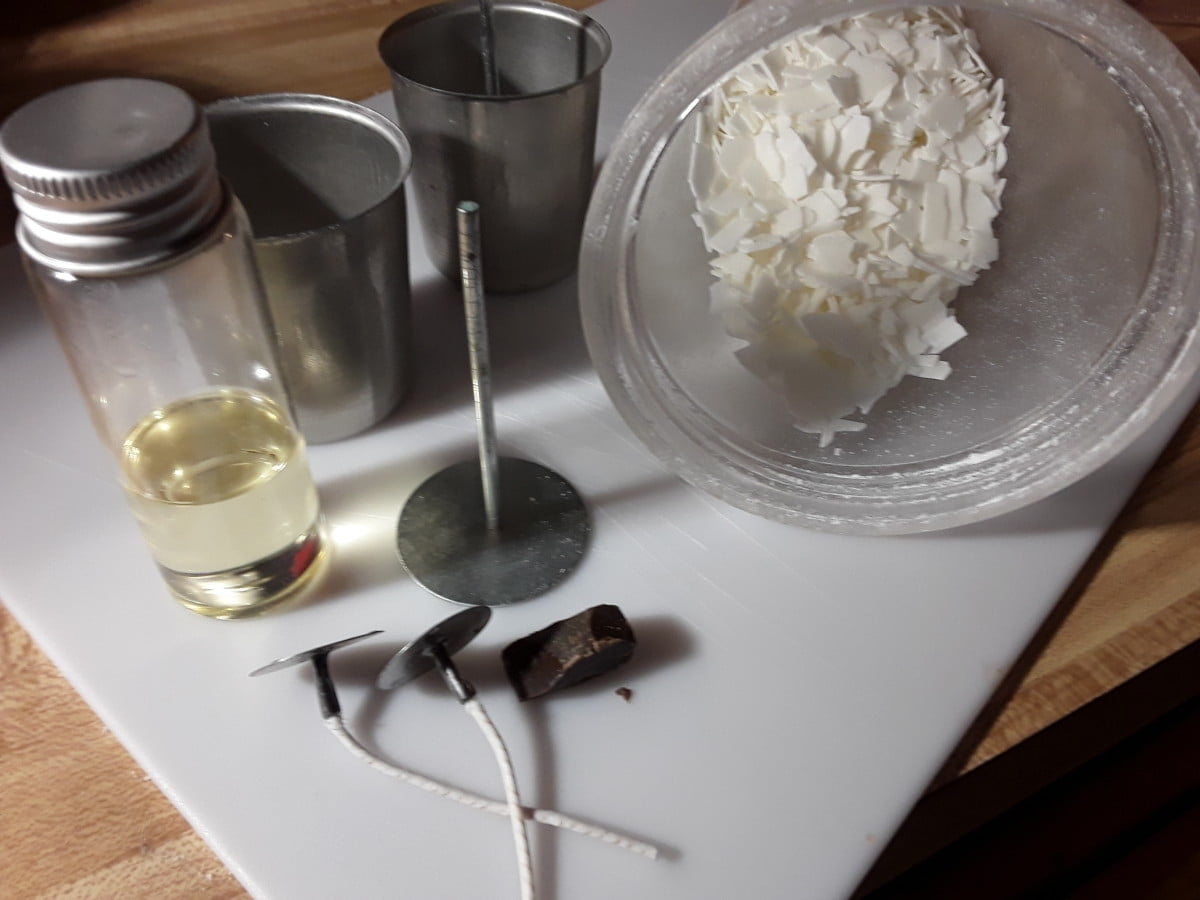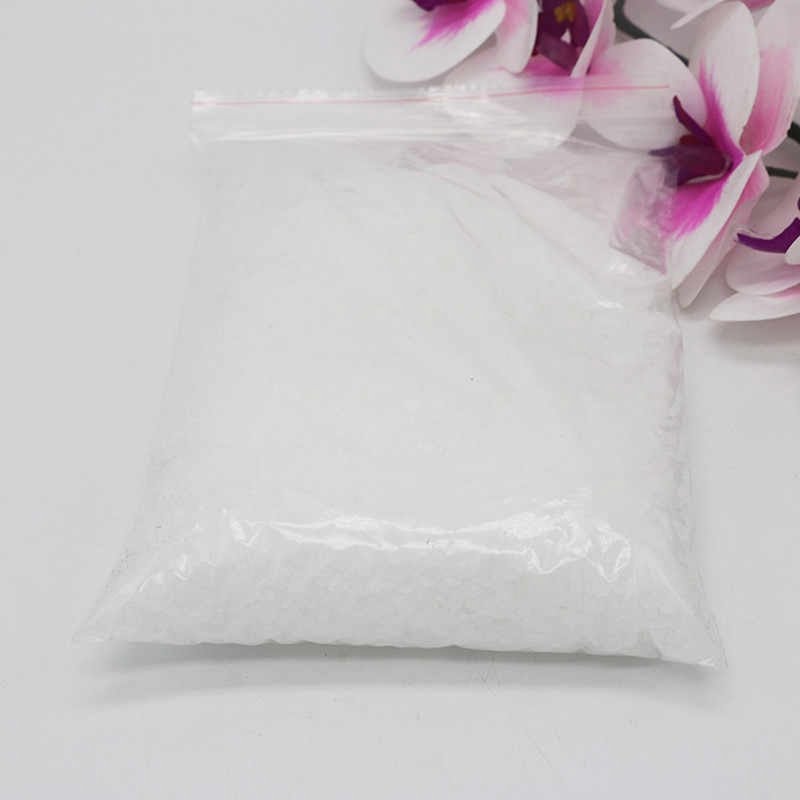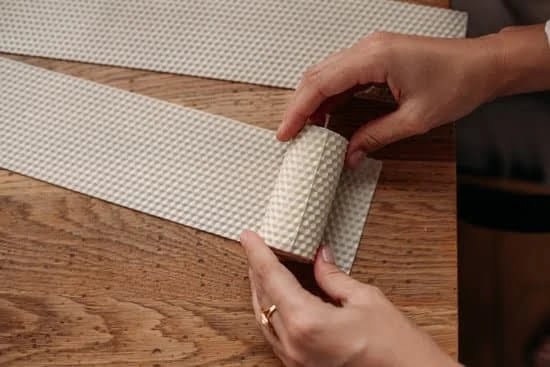Candle making has become a popular hobby and industry in recent years, with individuals and businesses alike seeking unique and sustainable options for creating their own candles. One such option that has gained significant attention is palm wax. In this article, we will delve into the pros and cons of using palm wax for candle making, helping you make an informed decision on whether it is the right choice for your candle-making endeavors.
Palm wax, derived from oil palms, has experienced a surge in popularity due to its unique properties and sustainable nature. It offers numerous benefits that make it an attractive option for candle makers. Understanding these advantages is crucial when deciding on the best materials to use in your craft. However, it’s also important to examine any potential drawbacks or environmental implications associated with palm wax production.
Before diving into details about palm wax composition and characteristics, the first step is understanding its growing popularity in the industry. More and more candle makers are turning to palm wax as a viable alternative to traditional waxes like paraffin or soy. This rising interest can be attributed to factors such as its clean burning properties, longer burn times compared to other waxes, and its ability to effectively emit fragrance from candles.
Ultimately, whether palm wax is good for candle making depends on your particular needs and priorities in terms of sustainability, burn quality, scent throw capacity, and visual aesthetics. By exploring the pros and cons of palm wax in depth throughout this article, you will gain the knowledge necessary to make an educated decision regarding its suitability for your candle-making projects.
Understanding Palm Wax
Palm wax is a popular choice for candle making due to its unique composition and characteristics. To truly understand the appeal of palm wax, it is important to delve into its origins and the qualities that set it apart from other types of wax.
Composition
Palm wax is derived from oil palms, specifically from the oil extracted from their fruit. The oil undergoes a process called hydrogenation, which transforms it into a solid form – palm wax. This composition makes palm wax a 100% natural product without any synthetic additives or chemicals.
Characteristics
One of the notable characteristics of palm wax is its hardness. It has a higher melting point compared to other waxes, resulting in candles with excellent structural integrity. Palm wax also exhibits a unique crystal structure that gives it a visually appealing appearance when used in candle making. These crystals can create frost-like patterns on the surface of the candle, enhancing its aesthetic appeal.
Another advantage of using palm wax in candle making is its clean and soot-free burn. When properly formulated, palm wax candles have minimal smoke emissions and do not release harmful pollutants into the air. This makes them an ideal choice for individuals with respiratory sensitivities or those who prefer cleaner burning candles.
Additionally, palm wax’s ability to hold fragrance is exceptional. It has a high scent throw capacity, allowing candles made with palm wax to effectively emit fragrance throughout a room. This makes it particularly beneficial for scented candles where scent diffusion is crucial.
Moreover, palm wax offers longer burning times compared to other types of waxes due to its denser nature. This means more hours of enjoyment for candle enthusiasts before needing to replace their candles.
Understanding these composition and characteristic aspects helps candle makers make informed decisions about whether palm wax aligns with their desired outcomes and preferences for their creations.
Advantages of Using Palm Wax in Candle Making
Palm wax has become increasingly popular in the candle making industry due to its numerous advantages. One of the main benefits of using palm wax is its clean and soot-free burning properties. When palm wax candles are burned, they produce minimal to no soot, resulting in cleaner air quality and a healthier environment. This is particularly important for those who have respiratory conditions or allergies.
Another advantage of palm wax is its excellent scent throw capacity. Palm wax has the ability to hold and release fragrance effectively, resulting in stronger and longer-lasting scents compared to other types of waxes. This makes palm wax candles a popular choice for those who enjoy strong, aromatic candles that can fill a room with delightful scents.
In addition, palm wax candles have a longer burning time compared to other types of candles. Palm wax has a high melting point, which means it burns at a slower rate, resulting in longer-lasting candles. This makes them more economical for consumers as they can enjoy the ambiance and fragrance of their candles for extended periods of time.
Overall, the use of palm wax in candle making offers several advantages including clean burning properties, excellent scent throw capacity, and longer burning times. These qualities make palm wax an attractive choice for both candle makers and consumers alike.
| Advantages | Description |
|---|---|
| Clean Burning | Palm wax produces minimal to no soot when burned. |
| Excellent Scent Throw | Palm wax holds and releases fragrance effectively, resulting in stronger scents. |
| Longer Burning Time | Palm wax candles burn at a slower rate due to their higher melting point. |
Sustainability Factor
Addressing Deforestation and Habitat Loss Concerns
One of the main concerns associated with palm wax production is its potential contribution to deforestation and habitat loss. The demand for palm oil, from which palm wax is derived, has led to the expansion of oil palm plantations, often at the expense of valuable natural habitats such as rainforests. This destruction of natural ecosystems can lead to a loss of biodiversity and have negative impacts on the environment.
To address these concerns, it is crucial to source palm wax from sustainable plantations that adhere to responsible and ethical practices. The Roundtable on Sustainable Palm Oil (RSPO) is an organization that certifies sustainably sourced palm products. Look for candles labeled with the RSPO logo to ensure that they meet certain environmental and social standards.
By supporting sustainably sourced palm wax, consumers can help promote responsible agricultural practices and encourage companies to adopt more environmentally friendly methods in their supply chains.
The Importance of Certifications
When considering using palm wax for candle making, it is essential to look for certifications such as RSPO. These certifications provide assurance that strict guidelines and standards are followed throughout the production process. By purchasing candles made from certified sustainable palm wax, consumers can contribute to reducing the environmental impact associated with non-sustainable practices.
Furthermore, some certifications not only address environmental aspects but also social factors. For example, RSPO certification includes criteria related to workers’ welfare and rights within the plantation industry. By supporting brands that prioritize certification standards, you can make a positive impact beyond just the ecological aspect.
An Ethical Choice
Understanding the environmental impact of our choices is more important than ever before. While concerns surrounding palm wax remain valid due to unsustainable practices in some regions, it is possible to make an ethical choice by advocating for sustainably sourced options.
By supporting companies committed to sustainability and choosing certified sustainable palm wax candles, consumers can contribute to the preservation of ecosystems, protection of biodiversity, and the overall well-being of our planet. Making an informed decision about the environmental impact of palm wax can lead to a more conscious and responsible choice when it comes to candle making.
Palm Wax Candle Aesthetics
Palm wax is not only a popular choice for candle making due to its eco-friendly properties and clean-burning features but also for the aesthetic appeal it brings to candles. The unique crystalline structure of palm wax contributes to its visually stunning appearance, making it a favorite among candle makers who prioritize both functionality and beauty.
One of the key advantages of using palm wax in candle making is its ability to achieve various textures, patterns, and frost-like effects. The natural crystal structure of palm wax creates an intricate design when solidified, resulting in visually appealing candles. Candle makers can experiment with different pouring techniques and molds to create one-of-a-kind patterns and textures that add a touch of elegance to their creations.
Furthermore, palm wax has excellent translucency, allowing it to produce beautiful luminosity when the candle is lit. This quality makes palm wax candles perfect for creating a warm and inviting atmosphere. Whether it’s a romantic dinner setting or a cozy evening at home, the soft glow emitted by palm wax candles enhances the ambiance and creates a visually pleasing focal point.
To showcase the versatility of palm wax candles, many candle makers incorporate additional decorative elements into their designs. These added adornments can include dried flowers, herbs, glitter, or even embedded objects that further enhance the visual appeal of the candle. With palm wax’s unique characteristics and ability to hold these embellishments well, there are virtually endless possibilities for creating personalized and decorative candles.
Drawbacks of Palm Wax in Candle Making
While palm wax offers many advantages for candle making, it is important to consider the drawbacks associated with this ingredient before making a decision. When compared to other candle-making options, palm wax does have a higher cost.
This can be a significant factor for those who are budget-conscious or producing candles on a large scale. However, it is worth noting that the quality and unique characteristics of palm wax may justify its higher price point for some candle makers.
Another drawback of working with palm wax is its relatively high melting point. Palm wax requires higher temperatures to melt compared to other waxes, which can pose challenges during the candle-making process. It may require more time and effort to properly melt and blend palm wax when creating candles. Additionally, the higher melting point can limit some design possibilities or techniques that may be achievable with other waxes.
Although palm wax is considered an eco-friendly and sustainable option in terms of its biodegradability and renewable source, there are concerns regarding deforestation and habitat loss associated with palm oil production. The demand for palm oil has resulted in the clearing of large areas of land, primarily in tropical regions, leading to environmental degradation and impacts on biodiversity.
To mitigate these concerns, it is crucial to source palm wax from sustainable plantations that adhere to ethical and environmentally responsible practices. Certifications such as RSPO (Roundtable on Sustainable Palm Oil) ensure that the production of palm oil and its derivatives aligns with strict sustainability criteria.
When considering whether or not to use palm wax for candle making, it is important to weigh these drawbacks against its benefits and your specific needs as a candle maker. While there are potential challenges associated with the cost and working properties of palm wax, its clean burn qualities, excellent scent throw capacity, longer burning time, and visually appealing crystalline structure make it an attractive choice for many artisans.
Ultimately, the decision between using palm wax or exploring alternatives such as soy wax will depend on factors such as sustainability preferences, budget constraints, and desired candle aesthetics.
The Debate
The debate between palm wax and soy wax has been a topic of discussion among candle makers for quite some time. Both options have their own set of advantages and drawbacks, making it important for candle makers to understand the differences before deciding which wax to use. In this section, we will compare and contrast palm wax with soy wax in terms of several key factors: sustainability, burn quality, scent throw, and visual aesthetics.
Firstly, let’s explore the sustainability aspect. Palm wax is often criticized for its association with deforestation and habitat loss due to large-scale palm oil production. However, it is essential to note that sustainable sourcing from certified plantations can address these concerns.
On the other hand, soy wax is typically touted as a more environmentally friendly option since it is derived from soybean oil, a renewable resource. Soybean cultivation also promotes agriculture diversification and reduces dependence on petroleum-based products.
Secondly, burn quality plays a crucial role in determining the overall performance of candles. Palm wax has been praised for its clean and soot-free burning properties. It tends to produce less smoke compared to other waxes, resulting in cleaner air quality when the candles are lit. Soy wax also offers a clean burn with little to no soot formation. However, some users claim that palm wax creates a more consistent burn due to its higher melting point.
In terms of scent throw, both palm wax and soy wax are known for their ability to carry fragrance effectively. Palm wax generally has excellent scent throw capacity, ensuring that candles emit a strong aroma when burned. Soy wax is also known for its ability to hold fragrance well but may require more effort in achieving a stronger scent throw.
Lastly, visual aesthetics are important for many candle makers who want their creations to be visually appealing. Palm wax has a unique crystalline structure that contributes to its natural beauty and provides opportunities for creating various textures, patterns, and frost-like effects on candles. Soy wax, while capable of producing visually appealing candles, does not offer the same level of complexity and versatility in terms of aesthetics.
Conclusion
In conclusion, palm wax can be a great option for candle making, but it is important to carefully weigh the pros and cons before making a decision. Throughout this article, we have explored the composition and characteristics of palm wax, its advantages in candle making, as well as its sustainability factors and potential drawbacks.
One of the biggest advantages of using palm wax in candle making is its clean and soot-free burning properties. Palm wax candles burn cleanly, without releasing harmful chemicals or soot into the air. Additionally, palm wax has an excellent scent throw capacity, allowing candles to effectively emit fragrance throughout a room. Moreover, palm wax candles tend to have a longer burning time compared to other types of candles.
However, it is crucial to consider the sustainability factor when using palm wax. The production of palm oil has been associated with deforestation and habitat loss in certain regions. To ensure ethical and environmentally responsible practices, it is important to source palm wax from sustainable plantations that are certified by organizations like RSPO (Roundtable on Sustainable Palm Oil).
Ultimately, whether or not palm wax is good for candle making depends on individual needs and preferences. It is important for candle makers to consider their priorities in terms of sustainability, burn quality, scent throw, visual appeal, and budget constraints when choosing between different types of waxes. By weighing these factors carefully and understanding the benefits and drawbacks of each option, one can make an informed decision on whether palm wax is suitable for their candle-making endeavors.
Frequently Asked Questions
Is palm wax better than soy wax?
Whether palm wax is better than soy wax depends on the individual’s preferences and priorities. Palm wax is a natural, renewable resource derived from palm oil, which makes it an environmentally-friendly choice. It has a smooth texture and can hold fragrances well, resulting in strong and long-lasting scents when used for candles.
On the other hand, soy wax is also a popular choice due to its clean-burning properties and longer burn time. Soy wax is derived from soybean oil and offers a creamy appearance when used for candles. Ultimately, it comes down to personal preference in terms of fragrance performance, burn time, and sustainability.
What Wick works best with palm wax?
The best wick to use with palm wax often depends on the specific candle size and vessel being used. Generally, cotton wicks are recommended for most applications as they tend to work well with palm wax. They offer a stable flame that produces minimal soot while providing an even burn throughout the candle’s lifespan.
Choosing the appropriate wick size based on jar diameter and desired burn rate is essential to achieve optimal burning performance with palm wax candles. It’s always recommended to conduct test burns with different wick sizes before settling on the best option for your specific candle-making project.
Is it safe to burn palm wax?
When burned properly, palm wax is generally safe to use for candle making. It doesn’t emit harmful toxins or pollutants during combustion like some paraffin-based candles may do. However, it’s crucial to follow proper candle safety guidelines regardless of the wax type being used.
This includes never leaving a burning candle unattended, keeping it away from flammable materials or drafts, placing it on a heat-resistant surface, trimming the wick before each burn, and not burning it for extended periods or close to reaching its bottom limit. Adhering to these precautions helps ensure a safe burning experience with any type of candle made from palm wax or other natural waxes.

Welcome to my candle making blog! In this blog, I will be sharing my tips and tricks for making candles. I will also be sharing some of my favorite recipes.

